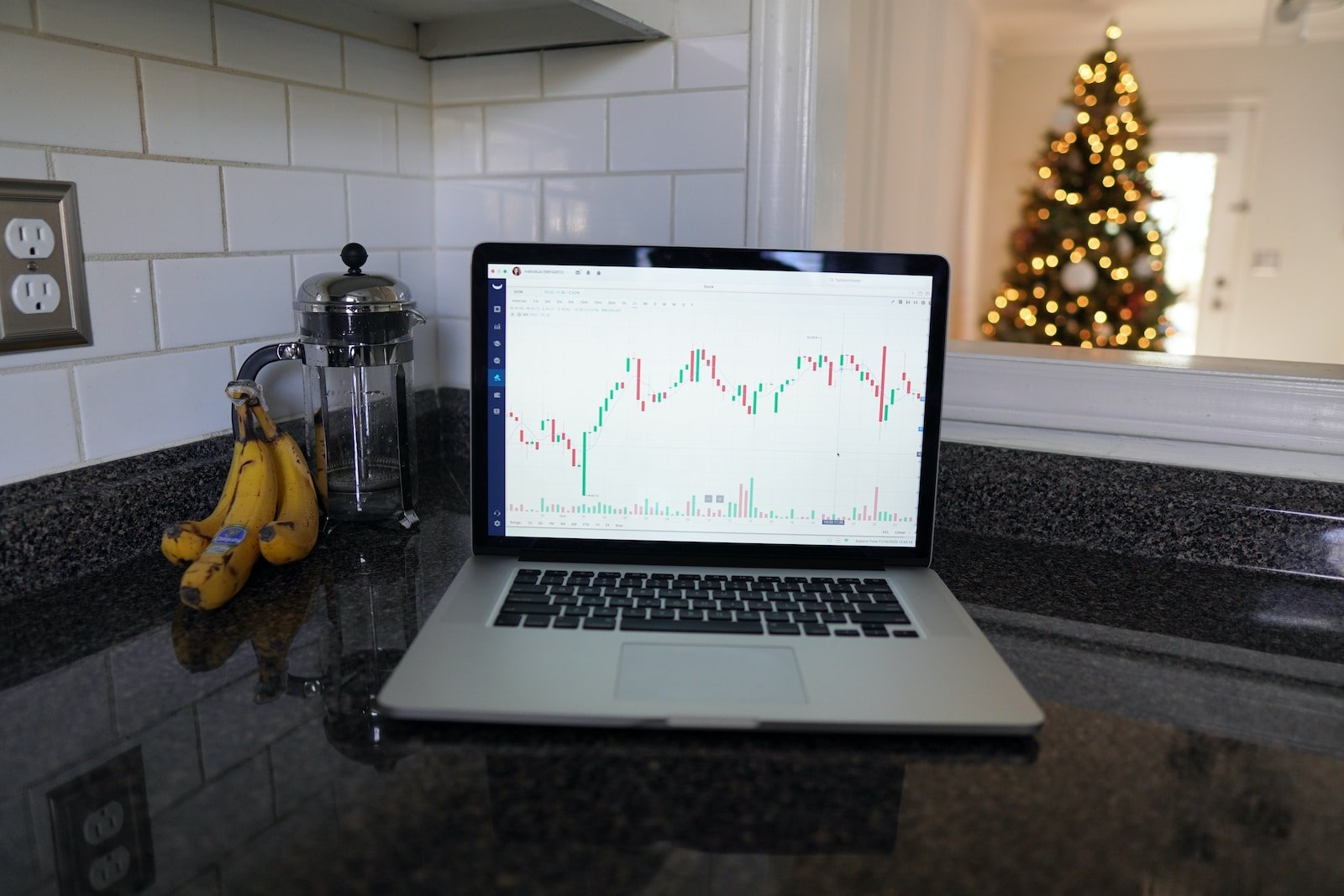Economic Moat And Competitive Advantage In Investing
In the world of investing, understanding the concept of economic moat and competitive advantage is crucial for making informed decisions.
An economic moat refers to the unique set of characteristics that allows a company to maintain its market position and fend off competition over the long term. It acts as a protective barrier, giving the company a sustainable edge against its rivals.
Warren Buffett, one of the most successful investors of all time, popularized the concept of economic moats. He believes that companies with strong moats are more likely to generate consistent profits and deliver solid returns for shareholders. By identifying companies with sustainable competitive advantages, investors can align their portfolios with businesses that have a higher chance of long-term success.
Companies with strong economic moats possess certain key characteristics that set them apart from their competitors. These characteristics include brand recognition, high switching costs for customers, unique distribution networks, and barriers to entry for new competitors. Such traits make it difficult for rivals to replicate or undermine their market position. By understanding these factors and analyzing how they contribute to a company’s competitive advantage, investors can identify opportunities where they can potentially capitalize on long-term growth prospects in an increasingly competitive marketplace.
Investing in companies with strong economic moats not only provides potential financial gains but also aligns with our desire for freedom in our investment choices. By selecting firms that have established themselves as industry leaders through their competitive advantages, we are betting on stability and longevity rather than short-term volatility. This approach allows us to invest confidently in businesses that have proven track records of success and are more likely to withstand market challenges over time and continue to compound.
So let’s dive deeper into the concept of economic moat and explore different types of competitive advantages that can help us build a portfolio capable of delivering sustained financial independence.
Key Takeaways about Economic Moat and Competitive Advantage
- Economic moats are unique characteristics that give companies a competitive advantage and allow them to maintain market position.
- Companies with strong economic moats have brand recognition, high switching costs, unique distribution networks, and barriers to entry.
- Investing in companies with strong economic moats aligns with stability and longevity in investments, as they generate consistent profits and have sustainable competitive advantages.
- Understanding the characteristics of companies with strong economic moats is essential for investors seeking consistent returns and long-term success.
The Significance of Economic Moat in Investing
If you want to be a successful investor, you’ve gotta understand the significance of an economic moat.
An economic moat refers to a company’s competitive advantage that allows it to maintain its market share and generate sustainable profits over the long term. It acts as a barrier to entry for competitors, making it difficult for them to replicate the company’s success. Understanding economic moats is crucial because it can greatly increase your chances of long-term investing success.
A company with a strong economic moat possesses a competitive advantage that sets it apart from others in the industry. This could be in the form of superior technology, brand recognition, economies of scale, or patents and licenses. These advantages create barriers that make it challenging for new entrants or existing competitors to erode the company’s market position. By investing in businesses with sustainable competitive advantages, you are essentially betting on their ability to withstand competition and continue generating profits.
The significance of an economic moat becomes even more apparent when considering the concept of long-term investing success. Companies with strong moats tend to have stable cash flows and higher profitability, which makes them attractive investment opportunities. They’re better equipped to weather economic downturns and adapt to changes in consumer preferences or industry dynamics. By identifying companies with solid economic moats, investors can build portfolios that have higher chances of delivering consistent returns over time.
Understanding economic moats is essential for investors seeking long-term success. A strong economic moat provides companies with a competitive advantage that can sustain their profitability and market position over time. By focusing on businesses that possess these characteristics, investors can increase their odds of achieving consistent returns in their portfolios. In the next section, we’ll delve into Warren Buffett’s concept of an economic moat without missing a beat.
Warren Buffett’s Concept of Economic Moat
Surprisingly, Warren Buffett’s notion of an economic moat is not as impenetrable as one might think. While the concept refers to a company’s sustainable competitive advantage that allows it to fend off competitors and maintain its market position, it does not guarantee invincibility. Buffett himself has emphasized the importance of assessing the durability and attractiveness of a company’s economic moat before investing in it. To illustrate this point, let’s consider a 3 column and 4 row table:
| Economic Moat | Competitive Advantage | Long-Term Investing Success |
|---|---|---|
| Brand Recognition | Product Differentiation | Consistent Profitability |
| Cost Leadership | Switching Costs | Strong Cash Flow |
| Network Effects | Intellectual Property | Sustainable Growth |
| High Customer Loyalty | Unique Distribution | Market Dominance |
Analyzing this table helps us understand that companies with strong economic moats possess various characteristics that contribute to their long-term success. For instance, brand recognition enables them to command customer loyalty and charge premium prices for their products or services. Additionally, cost leadership allows these companies to offer competitive prices while maintaining healthy profit margins.
Moreover, network effects play a vital role in creating barriers for potential competitors by making their services more valuable as more users join the network. In addition to these factors, having unique distribution channels or intellectual property rights further strengthens a company’s competitive advantage.
Understanding Warren Buffett’s concept of economic moat is crucial for successful long-term investing. However, recognizing that even businesses with strong moats can face challenges is equally important. In the following section about ‘characteristics of companies with strong economic moats,’ we will explore key attributes that make these companies resilient against competition without relying solely on an impenetrable barrier metaphorically known as an “economic moat.”
Characteristics of Companies with Strong Economic Moats
To truly understand the resilience of companies with strong economic moats, you’ll want to explore the key attributes that set them apart from their competitors.
One of the most important characteristics is a significant market share that allows them to dominate their industry. These companies have a wide economic moat, meaning they have established barriers that make it difficult for new entrants to compete effectively. This advantage gives them the ability to protect their profits and maintain their position in the market.
Another characteristic of companies with strong economic moats is a competitive advantage that isn’t easily replicable. They possess unique qualities or resources that give them an edge over their rivals. It could be proprietary technology, access to scarce resources, superior distribution networks, or even brand loyalty. Whatever it may be, this competitive advantage sets them apart and makes it challenging for others to replicate their success.
A strong economic moat also comes from having sustainable advantages over time. These companies consistently deliver high-quality products or services and adapt to changing market conditions effectively. They invest in research and development to stay ahead of trends and constantly innovate, ensuring they remain relevant and can withstand any challenges that come their way.
Companies with a strong economic moat tend to exhibit consistent financial performance as well. They generate stable cash flows, maintain healthy profit margins, and are able to reinvest these earnings back into the business for future growth opportunities. This financial strength enables them to weather downturns in the economy better than their competitors. When you think of it this way, many Blue Chip companies fall into this category.
Understanding the characteristics of companies with strong economic moats provides valuable insights into what sets them apart from others in the market. Their significant market share, unique competitive advantages, sustainability over time, and consistent financial performance contribute to their resilience and dominance in their respective industries.
With this understanding in mind, let’s now delve into exploring different types of competitive advantages without losing sight of our quest for freedom in investing.

Types of Competitive Advantages
When it comes to building a fortress for your investments, think of competitive advantages as the secret weapons that set certain companies apart from the rest of the battlefield. These advantages create an economic moat around a company, making it difficult for competitors to penetrate and erode its market share.
There are several types of competitive advantages that can contribute to the strength of an economic moat.
Firstly, one type of competitive advantage is cost leadership. Companies with this advantage are able to produce goods or services at a lower cost compared to their competitors. This allows them to offer products at a more affordable price while still maintaining profitability. For example, Walmart has been able to leverage its large scale and efficient supply chain management to become a leader in the retail industry.
Secondly, differentiation is another type of competitive advantage. Companies with this advantage offer unique and superior products or services that are not easily replicated by competitors. This allows them to command higher prices and build customer loyalty. Apple is a prime example of a company that has successfully differentiated itself through innovative design and user-friendly technology.
Thirdly, there is also the focus strategy as a competitive advantage where companies concentrate on serving specific niche markets rather than trying to appeal to everyone. By focusing on a smaller market segment, these companies can tailor their products or services specifically for those customers’ needs, creating strong customer relationships and brand loyalty. An example of this is luxury carmaker Ferrari which focuses on high-end sports cars for affluent consumers.
Lastly, switching costs can also act as a competitive advantage. When customers face significant costs or inconvenience when switching from one product or service provider to another, it creates barriers for competition. Companies like Microsoft benefit from high switching costs because users have invested time and effort into learning their software programs.
Understanding the different types of economic moats created by various competitive advantages can help investors identify companies with sustainable long-term growth potential. Whether it’s through cost leadership, differentiation, focus strategy, or switching costs, these advantages provide companies with a competitive edge and make it difficult for competitors to replicate their success. With this knowledge, investors can make informed decisions about where to invest their hard-earned money.
Transition: As we explore the concept of brand recognition as a competitive advantage, we will delve into how companies build strong brands that become synonymous with quality and trust in the minds of consumers.
Brand Recognition as a Competitive Advantage
Amidst the competitive landscape, companies strive to establish their brand recognition as a formidable shield that instills confidence and loyalty among consumers. Brand recognition is a crucial component of a company’s competitive advantage, as it sets them apart from their rivals and creates a strong economic moat.
When consumers recognize and trust a brand, they are more likely to choose its products or services over those of competitors. This not only leads to increased sales and market share but also provides long-term stability for investors. An example is Proctor and Gamble (PG).
Brand recognition can be built through various strategies such as consistent marketing campaigns, memorable logos, slogans, and positive associations with quality or value. Companies invest significant resources into creating brand awareness in order to gain an edge in the market.
For example, global giants like Coca-Cola or Nike have successfully established themselves as household names through decades of advertising efforts. As investors, we need to pay attention to companies with strong brand recognition because it indicates their ability to withstand competition and maintain customer loyalty.
Having brand recognition as a competitive advantage offers multiple benefits for investors. Firstly, it creates barriers for new entrants trying to penetrate the market. Established brands have already gained consumer trust and loyalty, making it difficult for newcomers without recognizable brands to compete effectively. Secondly, companies with strong brand recognition often enjoy pricing power – they can charge premium prices compared to their competitors due to the perceived value attached to the brand name alone. This translates into higher profit margins and better returns on investment for shareholders.
Brand recognition plays an integral role in establishing a company’s competitive advantage and building an economic moat that protects them from rivals in the market. It allows companies to differentiate themselves from competitors by instilling confidence and loyalty among consumers. As investors seeking long-term success, we should look for companies that have successfully built strong brand recognition as this indicates their ability to maintain customer loyalty and fend off competition effectively.
With this understanding of the importance of branding in investing, let us now delve into the next section about patents and intellectual property protection.
Patents and Intellectual Property Protection
Patents and intellectual property protection are crucial for companies to safeguard their innovations and prevent others from copying their ideas, leading to potential loss of revenue. One interesting statistic is that in 2019, the number of patent applications filed worldwide reached a record high of over 3.3 million, highlighting the growing importance of protecting intellectual property in today’s competitive market.
Intellectual property protection, specifically through patents, provides businesses with a competitive advantage by granting them exclusive rights to their inventions or innovations. Having patents in place creates an economic moat for companies, making it difficult for competitors to replicate or imitate their products or services. This barrier to entry helps establish a strong position in the market and can lead to long-term success.
Patents serve as an intangible asset that adds value to a company’s portfolio and can attract investors who recognize the significance of intellectual property protection. Moreover, patents not only protect a company’s current innovations but also incentivize further research and development. Knowing that their ideas are shielded from being stolen gives companies the confidence to invest time and resources into creating new technologies or processes. This continuous innovation strengthens their competitive advantage and enables them to stay ahead in an ever-evolving business landscape.
In addition to providing legal protection against infringement, patents also allow companies to license or sell their intellectual property rights. This provides another avenue for generating revenue through partnerships or collaborations with other entities interested in utilizing the patented technology. By monetizing their inventions in this way, companies can further enhance their financial stability and maintain a sustainable growth trajectory.
With patents acting as a fortress around a company’s innovative products or services, they contribute significantly towards building an economic moat that sets them apart from competitors. However, having high switching costs for customers is another aspect that further solidifies this competitive advantage by discouraging customers from easily switching brands or suppliers.
High Switching Costs for Customers
In our previous discussion on patents and intellectual property protection, we explored how these legal safeguards can contribute to building a strong economic moat and competitive advantage. Now, let’s delve into another factor that can create barriers to entry for competitors: high switching costs for customers.
When we talk about switching costs, we refer to the expenses or inconveniences that customers would incur if they were to switch from one product or service provider to another. These costs can be monetary, such as cancellation fees or the need to purchase new equipment, but they can also be intangible, like time spent learning how to use a new system or adjusting to a different user interface.
High switching costs act as a powerful deterrent for customers considering alternatives. If it is difficult or expensive for them to switch, they are more likely to stick with their current choice even in the face of competitive offerings. This creates an economic moat around a company because it reduces the risk of losing customers en masse and provides a sustainable competitive advantage.
To illustrate the impact of high switching costs on customer behavior, consider the following table:
| Switching Costs | Company A | Company B |
|---|---|---|
| Low | 10% | 90% |
| High | 80% | 20% |
In this hypothetical scenario, when switching costs are low (row one), only 10% of customers remain loyal to Company A while 90% defect to its competitor B. However, when switching costs are high (row two), Company A manages to retain 80% of its customer base while only losing 20%. This demonstrates how high switching costs can significantly tilt the scales in favor of companies with established relationships.
By leveraging high switching costs effectively, companies strengthen their economic moats and gain long-term advantages over competitors who may struggle to lure away their loyal customer base. In our subsequent section on unique distribution networks, we will explore another crucial aspect of building a strong economic moat.
Unique Distribution Networks
One key factor that sets successful companies apart from their competitors is the establishment of unique distribution networks. These networks give companies a competitive advantage by allowing them to reach customers in ways that others cannot. By creating these one-of-a-kind systems, companies can effectively control the flow of their products or services, ensuring that they are available when and where customers want them.
This level of control not only strengthens customer loyalty but also creates high barriers to entry for new competitors.
Unique distribution networks provide successful companies with a distinct edge over their rivals. For example, a company may have exclusive partnerships with suppliers or distributors, giving them access to resources and channels that are off-limits to others in the industry. This exclusivity allows these companies to offer products or services that cannot be easily replicated by competitors, making it difficult for new entrants to gain traction in the market.
Furthermore, these unique distribution networks often require significant investments and time to develop. Companies must strategically plan and invest in infrastructure, logistics, technology, and relationships to establish an effective network. As a result, they create a complex web of operations that is challenging for new competitors to replicate without substantial resources and expertise.
Successful companies understand the importance of establishing unique distribution networks as part of their economic moat strategy. These networks allow them to differentiate themselves from competitors by providing exclusive access to resources and channels while creating high barriers to entry for newcomers. By continuously investing in and optimizing their distribution systems, these companies can maintain their competitive advantage and secure long-term success.
Transition: As we delve into the topic of barriers to entry for new competitors, we will explore how successful companies leverage their unique distribution networks as one such barrier.
Barriers to Entry for New Competitors
To truly understand the challenges faced by new competitors, you must consider the formidable barriers that successful companies have established through their unique distribution networks. These barriers to entry act as a moat, protecting companies from potential competition and giving them a sustainable competitive advantage.
A wide moat is created when a company possesses characteristics that make it difficult for others to enter the same market and compete effectively.
One of the key barriers to entry is the high cost associated with developing and maintaining an efficient distribution network. Established companies have invested significant time and resources in building their networks, allowing them to reach customers quickly and efficiently. New entrants would need to incur substantial expenses in order to match or surpass these capabilities, which can be a daunting challenge for any aspiring competitor.
Another barrier is the relationships that successful companies have built with suppliers, retailers, and other stakeholders within their distribution networks. These relationships are often based on trust, reliability, and long-standing partnerships. Such strong ties can be difficult for new competitors to replicate or establish overnight. Without these connections in place, it becomes challenging for new entrants to secure reliable sources of raw materials or gain access to retail shelves.
Furthermore, regulatory hurdles also serve as barriers to entry in many industries. Established companies have typically navigated complex regulatory frameworks over time and developed expertise in compliance matters. New competitors may find it difficult to comply with industry-specific regulations or face delays due to licensing requirements. This gives existing players an advantage by reducing competition from potential disruptors who may struggle with regulatory constraints.
Understanding the barriers faced by new competitors is crucial when analyzing a company’s economic moat and competitive advantage. The unique distribution networks established by successful companies create significant obstacles for newcomers trying to enter the market. High costs associated with building an efficient network, strong relationships with suppliers and retailers, as well as navigating complex regulatory environments all contribute towards establishing a wide moat around established players.
Identifying companies with sustainable competitive advantages goes beyond recognizing these barriers to entry; it involves a deeper analysis of the company’s overall strategy and ability to maintain its advantage in the long term.
Identifying Companies with Sustainable Competitive Advantages
You can spot companies with sustainable competitive advantages by identifying the solid foundation upon which their success is built. These companies have what Warren Buffett, one of the most successful investors of all time, calls an ‘economic moat.’
An economic moat refers to the unique qualities or barriers that protect a company from competition and allow it to maintain its market share and profitability over the long term. Here are three ways to identify companies with wide moats and sustainable competitive advantages:
1) Strong brand recognition: Companies with wide moats often have strong brand names that are instantly recognizable. Think about iconic brands like Coca-Cola or Nike. These companies have spent decades building their brand reputation, creating a loyal customer base that is unlikely to switch to competitors easily. Their strong brand recognition acts as a barrier to entry for new competitors trying to capture market share.
2) High switching costs: Another way to identify companies with sustainable competitive advantages is by evaluating the barriers they create for customers who want to switch to another product or service provider. Companies that offer products or services with high switching costs make it difficult for customers to leave because they would incur significant expenses or effort in doing so. For example, enterprise software providers often require extensive training and customization, making it costly and time-consuming for businesses to switch providers.
3) Economies of scale: Companies that benefit from economies of scale have a distinct advantage over their competitors. As they grow larger, these companies can spread their fixed costs across a greater number of units produced or served, leading to lower average costs per unit. This cost advantage allows them to offer products at lower prices than smaller competitors while still maintaining healthy profit margins. Achieving economies of scale requires significant investments in infrastructure, distribution networks, research and development capabilities, and other resources that act as entry barriers for new players.
By identifying these key factors – strong brand recognition, high switching costs, and economies of scale – investors can evaluate whether a company has a sustainable competitive advantage or an economic moat. These characteristics suggest that the company is well-positioned to defend its market share and generate consistent profits over the long term.
Incorporating this analysis into your investment strategy can help you identify companies with wide moats and increase the likelihood of achieving successful returns in the stock market.
Conclusion
In conclusion, understanding the concept of economic moat and competitive advantage is crucial for successful investing. Warren Buffett’s idea of economic moat highlights the importance of companies having a sustainable competitive advantage that allows them to maintain their market position and generate consistent profits over time.
Companies with strong economic moats possess certain characteristics such as brand recognition, high switching costs for customers, unique distribution networks, and barriers to entry for new competitors.
Brand recognition plays a vital role in securing a competitive advantage as it establishes trust and loyalty among consumers. Just like how we prefer certain brands because they’ve proven themselves trustworthy and reliable, investors should seek out companies with well-established brands that hold significant market share.
Additionally, high switching costs make it difficult for customers to switch to competing products or services, creating a barrier for new entrants in the market. This factor strengthens the company’s position by reducing the risk of losing customers.
Furthermore, unique distribution networks can provide a competitive edge by making it challenging for competitors to replicate or reach the same level of efficiency in delivering goods or services.
Lastly, barriers to entry act as protective walls around established companies, preventing new competitors from easily entering the market and threatening their profitability.
By identifying companies with these sustainable competitive advantages, investors can increase their chances of achieving long-term success.
In investing, just as in life itself, having an advantage is crucial for success. Whether it’s being recognized for our talents or having exclusive access to resources others don’t possess – an economic moat provides that edge needed to thrive in a highly competitive world.
Through brand recognition, high switching costs for customers, unique distribution networks, and barriers to entry; companies establish their dominance within their respective industries. By recognizing these traits in potential investments we too can build our own economic moats – fortifying our portfolios against volatility and uncertainty while reaping consistent profits over time.

Dr. Lincoln C. Wood teaches at the University of Otago in New Zealand. He is an avid investor and educator. He loves cash flow, income, and dividends when investing. He likes to buy undervalued companies with strong advantages and earnings growth.






